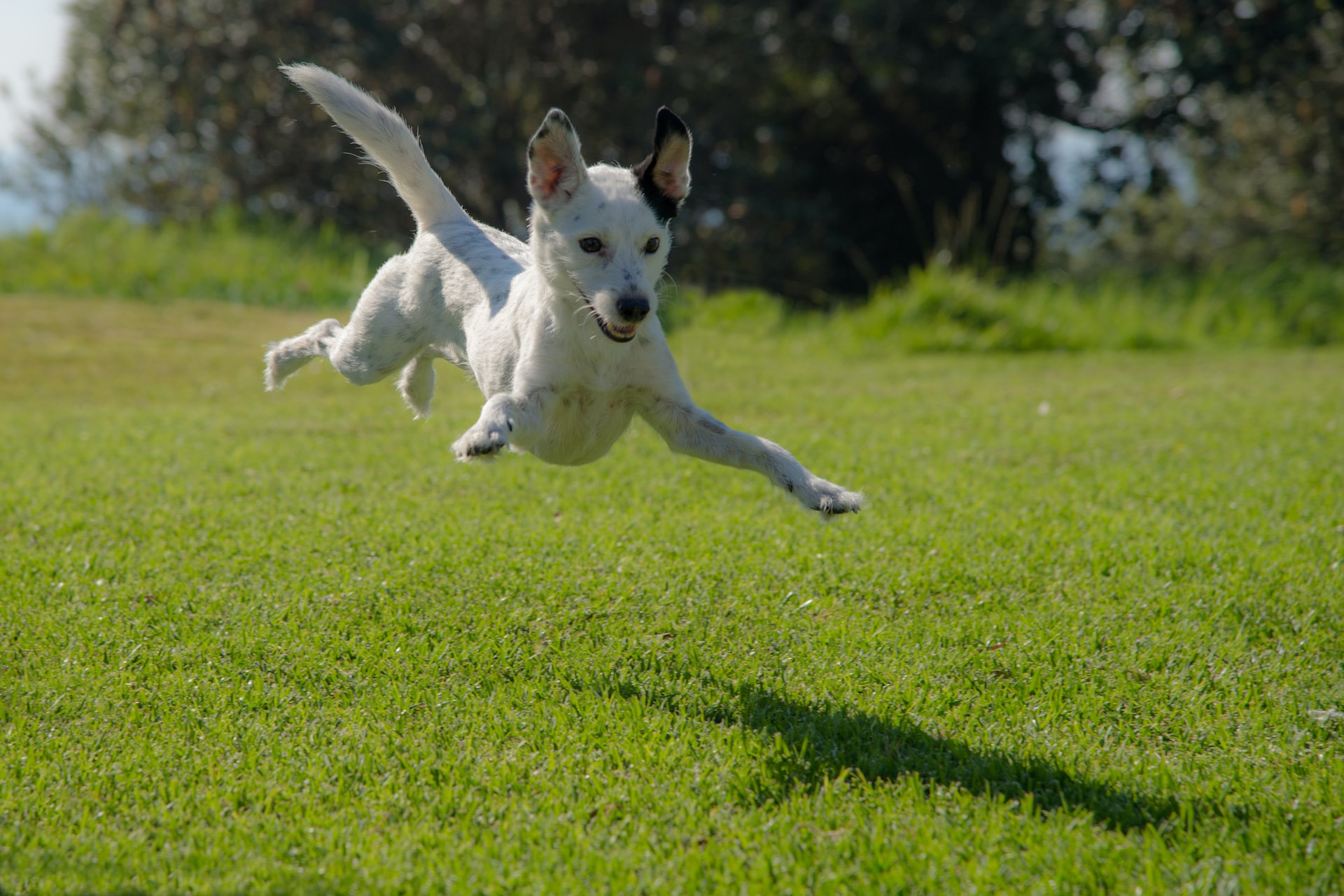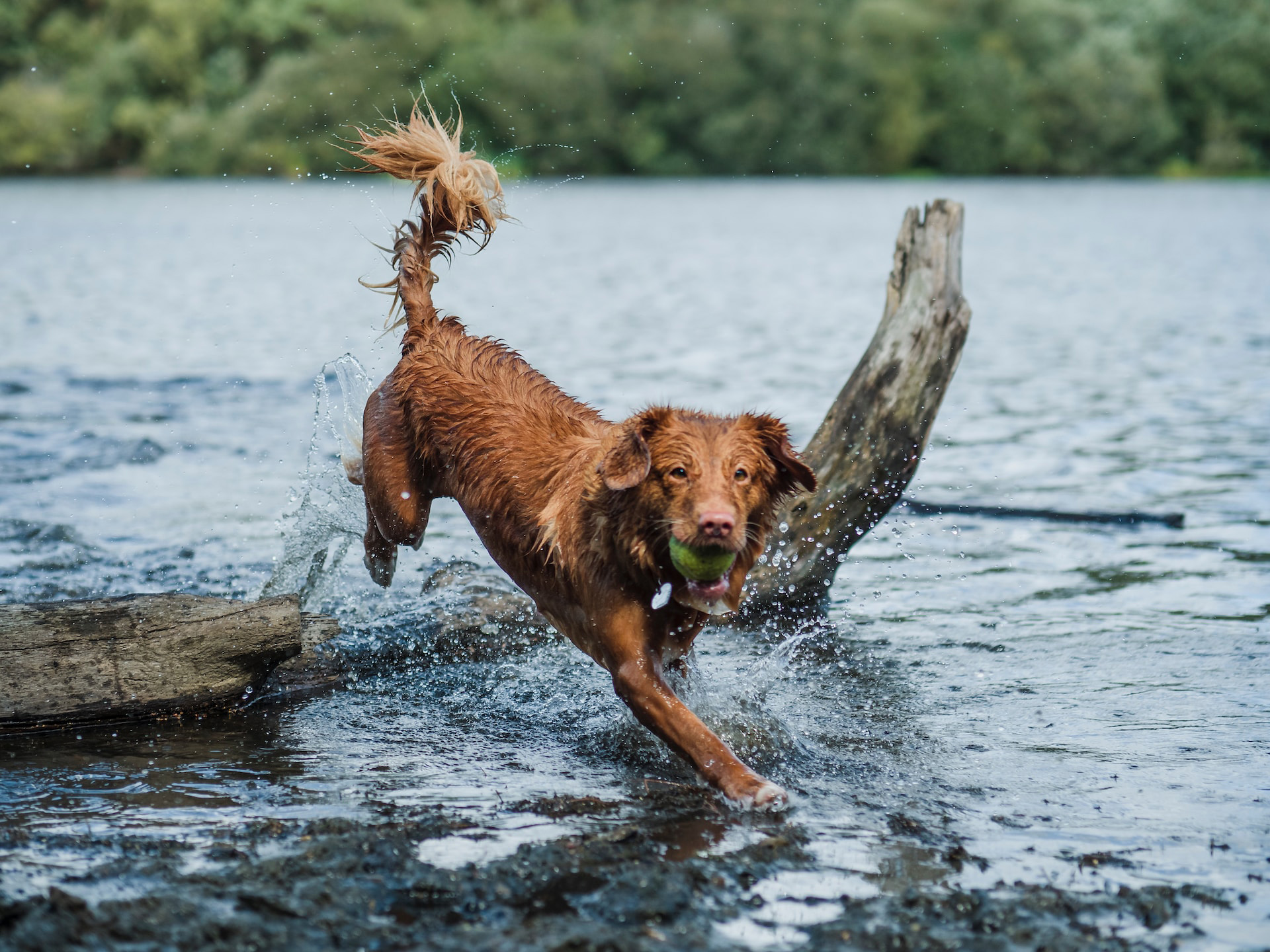Are you struggling to figure out how to settle down with your high-energy dog? Many dog owners face the challenge of managing a hyperactive pup, often feeling overwhelmed and unsure of what to do about it.
But what if there were effective ways to channel this boundless energy into something positive? Is it really possible to calm down your hyper puppy?
HighlightsCalming a hyper dog requires exercise, diet, and a calm environment.Mental stimulation is as tiring for dogs as physical exercise.Professional help may be needed for persistent hyperactive dogs.
Calming a hyper dog involves a blend of understanding their breed characteristics, recognizing signs of overstimulation, and employing strategies like routine exercise, a calm environment, and thinking about their diet. Each of these plays an important part in making life with your energetic dog more harmonious.
But there’s more to it than just wearing them out. Keep reading to find out all about how to manage a dog’s hyperactivity. This includes understanding why some dogs are more active than others. And useful tips on making a quiet space for your pet.
The information provided herein is for informational purposes only. Please refer to ourdisclaimerfor more details..
Table of Contents5 Tips To Calm Down a Hyper Dog1. Regular Exercise and Playtime2. Training and Mental Stimulation3. Creating a Calm Environment4. Dietary Considerations5. Professional Help and TherapiesThe Most Hyper Dog BreedsUnderstanding Hyperactivity in Dogs Through Their Life StagesGender and Breed Considerations in HyperactivityAge and Calming DownWhy Is My Dog So Hyper?Is Hyperactivity Harmful to Dogs?What Does It Look Like When a Dog Is Overstimulated?How Do You Treat Sensory Overload in Dogs?What to Do When Your Dog Won’t Calm Down1. Immediate Steps to Calm Your Dog2. Long-Term Strategies for a Calmer DogWrapping Up
5 Tips To Calm Down a Hyper Dog
Image credits:Ron Fung

There are a wealth of strategies designed to turn your hyperactive dog into a calmer and happier companion. Let’s explore some transformative tips and make life with your energetic dog friend a lot more peaceful.
1. Regular Exercise and Playtime
You might already know, but it bears repeating: regular exercise is crucial for a dog’s well-being, especially those with energy to burn. Think of it as their natural outlet. Here’s the twist though – it’s not just about the quantity, but also the quality of exercise. Let’s talk specifics:
2. Training and Mental Stimulation
Here’s something that might surprise you: mental exercise can tire a dog out just as much as physical activity, if not more. Dog training sessions are not just about obedience, they’re about engagement. Consider these approaches:
3. Creating a Calm Environment
A calm dog starts with a peaceful environment. Think of your home as a sanctuary, a place where peace reigns. This doesn’t mean a silent house. But a space where your dog feels safe and relaxed. Here are some ideas to create such an environment:
4. Dietary Considerations
What goes into your dog’s stomach can significantly affect their behavior. And a diet for example that’s high in sugar or carbohydrates, might contribute to their energetic behavior. Let’s find out how you can address these issues:
5. Professional Help and Therapies
Sometimes, even after your best efforts, you might need professional help, and that’s okay. Seeking advice from a vet or a dog behaviorist can provide you with tailored strategies. Specific to your unique situation. Here are some scenarios that require help for your dog:
The Most Hyper Dog Breeds
Some dog breeds are naturally more energetic than others such as:
These breeds are well-known for their excess energy.
These breeds were developed for work. That requires constant movement and quick thinking, which translates into their day-to-day behavior.
On the flip side, breeds like Bulldogs and Basset Hounds tend to be more laid-back. Knowing your dog’s breed traits can provide valuable insights into their behavior. And help you tailor your approach to meet their specific needs.
Understanding Hyperactivity in Dogs Through Their Life Stages
Image credits:Jamie Street

Hyperactivity can vary depending on the life stage of a dog. Puppies and adolescent dogs often find it challenging to focus and may appear energetic because they are in their developmental stages. This is a natural phase for them.
Gender and Breed Considerations in Hyperactivity
While young puppies are often perceived as more active. But this isn’t a set rule. Both male and female dogs of any breed can exhibit this behavior. However, dogs belonging to working, sporting, or herding breeds typically have higher energy levels. And might be more challenging for pet parents.
Age and Calming Down
Why Is My Dog So Hyper?
Have you ever wondered why your furry friend seems to have a lot of energy, bouncing off the walls at all hours? Understanding the cause of your dog’s hyperactivity is key. Here are some common reasons:
Is Hyperactivity Harmful to Dogs?
It can impact a dog’s physical health. Just like humans, dogs can experience stress and anxiety from overstimulation and excessive arousal. Which isn’t healthy if continuous. Particularly for younger dogs. Too much activity might stress their bones and joints.
What Does It Look Like When a Dog Is Overstimulated?
Recognizing an overstimulated dog is a vital skill for any dog owner because overstimulation goes beyond regular excitement. And, can lead to stress and behavioral issues if not managed properly. Common signs include:
1.Excessive Barking or Whining:When dogs feel overwhelmed it is their way of expressing frustration or anxiety. Unlike regular barking, this tends to be more frantic and persistent.
2.Pacing and Restlessness:If your dog is constantly moving, pacing back and forth, or seems unable to find a comfortable spot to rest. This could be a sign of sensory overload. An overstimulated dog might find it hard to settle down
3.Jumping and Nipping:These behaviors can be an expression of a dog’s inability to manage their excitement or sensory input and also it’s their way of trying to cope with the overwhelming stimuli around them.
How Do You Treat Sensory Overload in Dogs?
When it comes to sensory overload in dogs, prevention is always better than cure. If a dog approaches you with excitement requires a proactive approach in dealing. Some ways to calm and prevent overstimulation include:
1.Creating a Relax Environment:Minimizing noise and activity around your dog as a quiet, peaceful home environment can significantly help dogs prone to sensory overload. This includes turning down loud music, avoiding sudden loud noises, and creating a safe spot. A place where the dog can retreat.
2.Consistent Routine and Structure:Establishing a predictable routine helps provide stability. Such as regular feeding times, exercise schedules, and a consistent sleep routine can greatly reduce stress in anxious dogs.
3.Controlled Exposure to Stimuli:Introduce your dogto new stimuli gradually and in controlled settings for example slowly introducing them to new environments like dog parks, people, or other animals. And allowing them to adapt without becoming overwhelmed.
4.Identifying and Avoiding Triggers:Understand what specific situations or environments make your dog overstimulated, if crowded places, loud noises, or certain activities tend to overwhelm your dog, try to avoid these as much as possible. And when you do expose them. Do it in a controlled and reassuring way.
What to Do When Your Dog Won’t Calm Down
Facing a dog that won’t relax down, requires both immediate and long-term strategies in place. Here we will discuss two approaches to help your dog relax and regain composure:
1. Immediate Steps to Calm Your Dog
2. Long-Term Strategies for a Calmer Dog
If you’ve tried various strategies and your dog is still consistently hyper. Then it might be time to consult a veterinarian or a canine behaviorist. They can provide more targeted advice. And, if necessary, discuss the possibility of medication or other interventions.
Wrapping Up
Dealing with active dogs can be challenging. But with the right strategies, it’s manageable. It’s important to understand the reasons behind their energy, recognize signs of overstimulation, and know how to create a balanced environment can help a lot.
Remember what works for one might not work for another as every dog is unique. Every action you take, like making a quiet area or doing structured playtime, helps make life better and calmer for your furry buddy.
Keep this in mind! When you implement these strategies – patience, and consistency are the key here. Your dog isn’t just an animal you own, they’re a part of your family. Growing this relationship is a journey that’s full of learning and affection.
539views539views
Pet Wellness